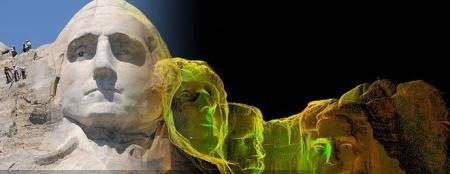A few days ago I had a pleasant conversation with a egeomated friend on the use I’m now giving to the reflectance, and if a robot would help me in any way to minimize the time. Here I summarize part of the talk.
 What is what we call a robotic workstation.
What is what we call a robotic workstation.
In short, is an equipment that has a capability to search on its own goal, doing a sweep until it’s founded. Works with a manual collector that operates the station from the place where the prism is placed.
Each brand has already toys that do this; the best I’ve seen in this task are the Focus.
I don’t know if now Sokkia has reflectance, but Topcom indeed.
When not to use it.
In conventional surveys, such as cadastre, I see little utility on this, at least for two reasons:
1. It can be slow. What happens is that if the station operator leaves the equipment leveled, takes the manual collector and goes with the prism to expect the equipment to find it, there will be some surprises. One of them is that the device makes a sweep in clockwise direction, until it finds the prism, and if this is moving in the opposite direction, it will sweep almost full circle for each item.
Perhaps, as a egeomated friend said, if these teams would have a sensor that will work with a fucking UHF frequency, that will make fast sweeps of the 4 quadrants, so that it would found the prism and then just do the scan in that quadrant. This would save much time.
2. It is not safe. This criterion has been partially smoked, thinking in countries where labor is expensive and it’s possible to save without assistants. Thus, the surveyor becomes the station’s operator, who also walks with the prism and also loads the tripod, its own bodyguard; finally, he becomes a sort of ‘whole-man’. But this criterion does not apply to Spanish-speaking countries where the cost of paying an assistant is relatively low and where instead of developed countries, total stations theft happens although you have an armed guard nearby.
When is the opportunity to use it.
The use itself seen as practical is with reflectance. This is a functionality that some modern stations brings, that makes a sweep of the whole area, just like a radar, and then it is processed as a three dimensional mesh. The case would be for example, a work which is making soil mass movement, cuts, fills; with a scan at 6 am we will have the initial state; being placed on the same point, at 5 pm, in 5 minutes you would calculate the volume produced.
Also for highly specialized jobs, like the one announced by Leica on Hexagon’s page (the company which also recently purchased Intergraph)

If one of these days, the U.S. government hires those to make a study of each welt of George Washington’s nose… definitely, a robot is ideal.
 Autocad Software, Bentley Microstation, Gis Google Earth, Gis System Geomate Provides Services For Complete Gis Software And Solutions, Autocad Software, Autocad Courses, Bentley Microstation, Microstation Software, Gis Google Earth, Open Source Gis And More.
Autocad Software, Bentley Microstation, Gis Google Earth, Gis System Geomate Provides Services For Complete Gis Software And Solutions, Autocad Software, Autocad Courses, Bentley Microstation, Microstation Software, Gis Google Earth, Open Source Gis And More.